I’ve pulled Raspberry Point oysters out of the bay and shucked them on a barge, downing them with sips of Cloudy Bay sauvignon blanc straight from the bottle, and shivered on a boat out on New London Bay taking in the scene as heavy socks of PEI mussels were pulled up from murky green water. But I came here to be a judge for the island’s potato seafood chowder competition and by god, it’s time to eat some chowder.
Lots of chowder.
So late this afternoon I walked down to the festival site, a big white circus tent along the Charlottetown waterfront, where a group of young girls were performing some sort of an Irish clog dance disconcertingly to country music.
I found the check-in point for the judges and was hustled backstage to where the organizers had set up linen-covered tables in a horseshoe. All the other judges, including the competition leader, Hans Anderegg, a Swiss-born chef who’s been an instructor at the Culinary Institute of Canada since 1988, were already here and didn’t look too pleased at my slightly-late arrival.
Hans gave me a rules sheet and told me to quickly look it over.
I said, “There are rules for a chowder contest?”
Hans smirked and shook his head in disgust.
Okay, evidently there are rules for making chowder. Like the chowder must contain only Prince Edward Island shellfish and seafood (makes sense) and is restricted to flounder, trout, haddock, cod, hake, soft shell clams, oysters, mussels, quahogs, lobster, scallops, halibut, salmon, and snow crab.
Not a problem.
Also, the “registrant’s chowder must contain Prince Edward Island potatoes.” And be a traditional milk or cream-based chowder.
Well, nothing too unusual there.
Then Hans handed me a score sheet. I was to rate each chowder for flavor (20 points), consistency (10 points), appearance (10 points), and overall appeal (10 points). The last category seemed a little redundant to me (wouldn’t its overall appeal be determined by the flavor, consistency, and appearance?), but what the hell did I know. Hans was in charge of the competition, not me, and Hans was from Switzerland so we would do it his way, jaa?
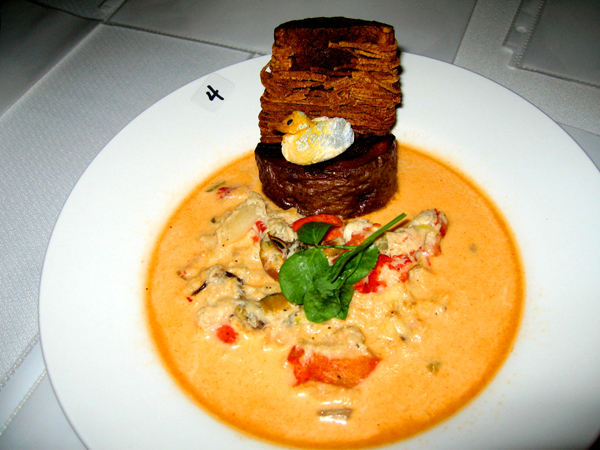
The orange glow in this chowder comes from an abundance of curry. The brown thing in the back is a whole potato stuck upright in the soup. Needless to say, this is not the winning entry.
Four or five waiters appeared out of nowhere and gave us each 10 soup spoons, a plastic bottle of water, and two paper cups.
“Where’s the wine?” I asked.
“Vine?” said Hans.
“You don’t expect us to down ten bowls of fish chowder without a glass or two of something minerally and cold, do you?”
Fortunately, there was a murmur of consent amongst my fellow judges. Hans conferred with a tall, somber woman dressed all in black and minutes later, two bottles of very bad chardonnay were brought to the table. Oh, well. Better than nothing.
Before I could condition my taste buds by taking a sip or two, the first round of chowders were brought to the table. Is it possible to make a bad seafood chowder when you’re using exquisitely fresh PEI shellfish and fish and island potatoes? It is. This was ghastly. The chef’s secret ingredient, a spritzing of whisky, was cloying and overwhelmed the bombed over mussels and clams. I generously awarded it 27 points out of a possible 50.
There were other miscues. The roux for one chowder tasted like Elmer’s glue and wedded my spoon to the bowl. Another had so much curry in it I was forced to drink two glasses of wine just to flush my taste buds.
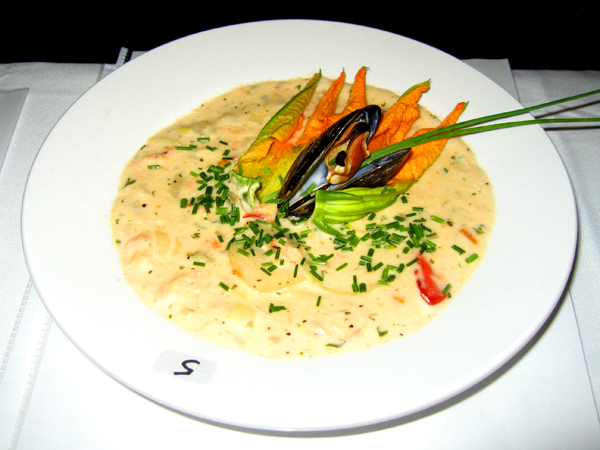
Do we really want whole squash blossoms in our seafood chowder? I think not.
But they weren’t all bad. One perfectly balanced chowder was delicately spiced with paprika chili oil, giving the milk base just a little heat, and another showcased the island’s mussels and scallops along with big chunks of perfectly poached lobster.
In the end, the consensus winner was a recipe titled “Just Like Dad’s Seafood Chowder” with its simple base and a generous sampling of all the good things that come from PEI: halibut, haddock, salmon, scallops, lobster, crab, mussels…and, of course, oysters.
It was made by Duncan Smith. Who just happens to be the executive chef at Liam Dolan’s Claddagh Oyster House.
Leave it to someone named Duncan to come up with the perfect seafood and potato chowder.
Now if only the wine had been half as good.



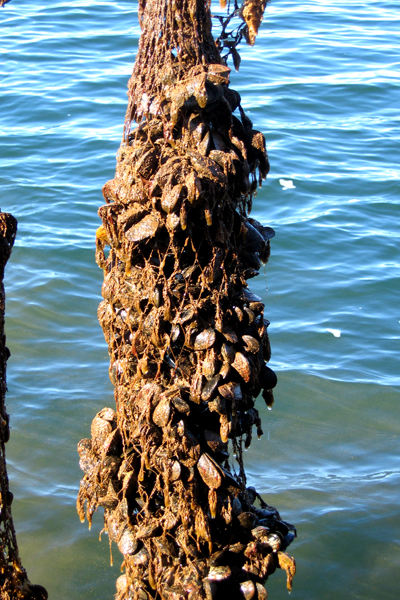
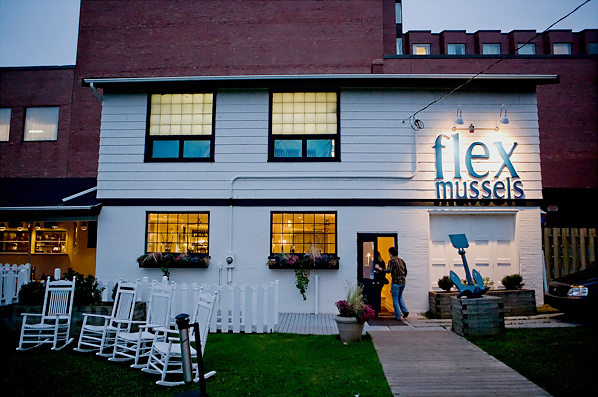
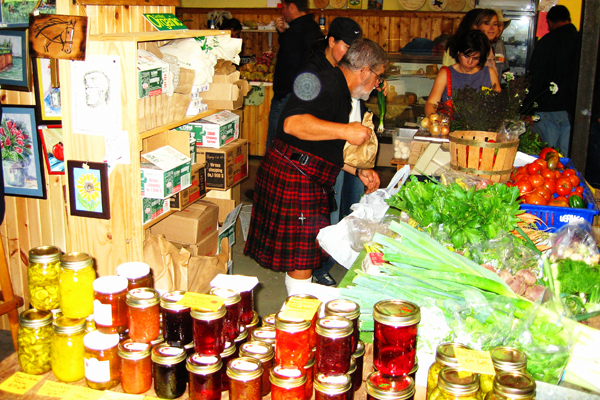

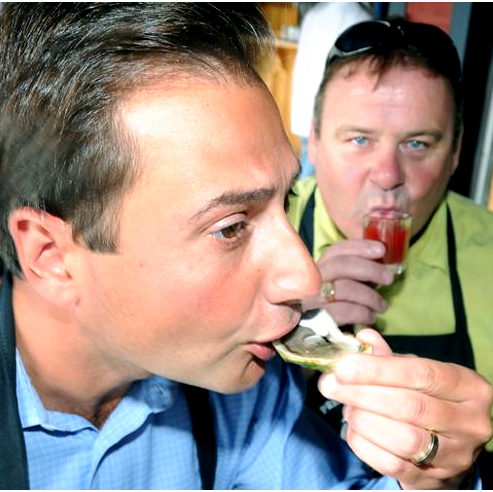
Recent Comments